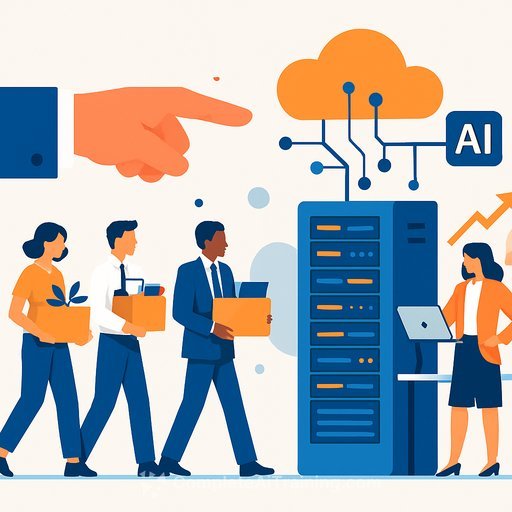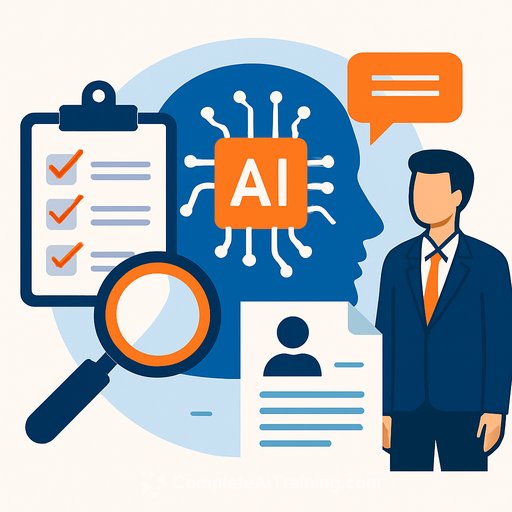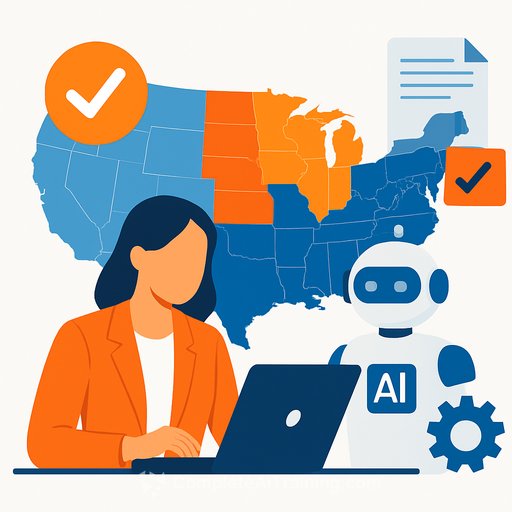Amazon to cut 15% of HR team as AI push accelerates: What HR leaders should do now
Amazon is preparing another round of cuts, this time centered in HR. Reports indicate approximately 15% of the company's HR department may be eliminated - roughly 1,500 roles out of 10,000.
Timing is unclear, and it's unknown how many roles in Puget Sound will be affected. The move aligns with Amazon's wider AI buildout and a previously announced plan to devote roughly $100 billion in capital expenditures this year, focused on cloud and AI data centers.
The signal from leadership
Amazon's CEO Andy Jassy has been clear: AI is being embedded across the company. As he noted in June, "In virtually every corner of the company, we're using Generative AI to make customers' lives better and easier." While new roles will emerge, leadership expects an overall decline in headcount as automation and AI scale.
Why this matters for HR
- HR is directly in scope for automation: recruiting coordination, initial screening, onboarding workflows, employee support, and routine policy inquiries are prime targets.
- Workforce mix will shift: fewer generalist roles, more specialists in analytics, systems, AI ops, and change management.
- Operating models must update: leaner HR with standardized processes, AI-enabled self-service, and tighter integration with IT and Finance.
What to do in the next 30-90 days
- Map automation impact: list HR processes by volume, cost, SLA, and risk. Flag quick-win tasks for AI copilots and RPA. Identify roles most exposed.
- Run scenario planning: model 10%, 15%, and 20% HR cost reductions. Outline service level impacts, role shifts, and vendor needs for each case.
- Stand up an AI-in-HR working group: HR Ops, Talent Acquisition, HRIT, Legal, and Security. Define guardrails, data access, and approval flows.
- Upgrade self-service: expand knowledge bases and chat interfaces for employees and managers. Track deflection rates and ticket resolution time.
- Prepare a redeployment path: inventory internal roles needing analytics, systems, and AI tooling skills. Pair affected HR staff with short upskilling sprints.
- Align comms and support: ready concise messaging for managers and employees. Ensure EAP resources and fair process guidelines are accessible.
Skills and roles that gain value
- People analytics: building dashboards, headcount forecasting, skills taxonomies, and ROI cases for automation.
- HR systems and AI ops: prompt design for HR use cases, model evaluation, data governance, and workflow orchestration.
- Change and vendor management: piloting tools, negotiating service levels, and driving adoption without service disruption.
Policy, ethics, and risk to manage
- Bias and compliance: document data sources, monitoring, and human review for AI-assisted decisions in hiring and performance.
- Data security: restrict model access to the minimum needed. Log prompts and outputs touching sensitive HR data.
- Transparency: inform employees where AI is used, how accuracy is checked, and how to escalate issues to a human.
- Cross-border rules: align AI usage with regional labor laws, data residency, and works council requirements.
Budget and tooling checklist
- Reallocate spend: shift part of TA and HR Ops budgets to AI pilots with clear KPIs (time-to-fill, offer-accept, deflection rate, cost per case).
- Pilot, then standardize: start with a narrow use case (e.g., candidate screening summaries), measure impact, and scale only after review.
- Audit vendors: demand explainability, audit logs, SOC 2/ISO attestations, and strong data retention controls.
Context you can cite internally
Amazon has already reduced 27,000 corporate roles between 2022 and 2023 and continued with waves of cuts over the past year. The company's current investment focus is clear: expand cloud capacity and AI infrastructure, streamline corporate functions, and grow with fewer manual processes.
Practical next steps for HR leaders
- Publish a 1-page AI-in-HR policy and a living backlog of use cases ranked by value and risk.
- Train managers on how to use AI assistants responsibly for hiring, feedback, and documentation.
- Create an internal mobility lane for affected HR roles with fast-track upskilling in analytics and systems.
- Set quarterly reviews to retire low-value work, not just headcount. Track time saved and quality outcomes.
If you need structured upskilling paths for HR teams adopting AI tools and workflows, explore role-based options here: AI courses by job.
For executive briefings and financial context, Amazon's investor relations updates can be found here: Amazon Investor Relations.
Bottom line: AI investment is accelerating while corporate headcount tightens. HR teams that move first-codifying guardrails, reworking service delivery, and developing analytics and systems skills-will protect service quality and create a clear path for their people.
Your membership also unlocks:






